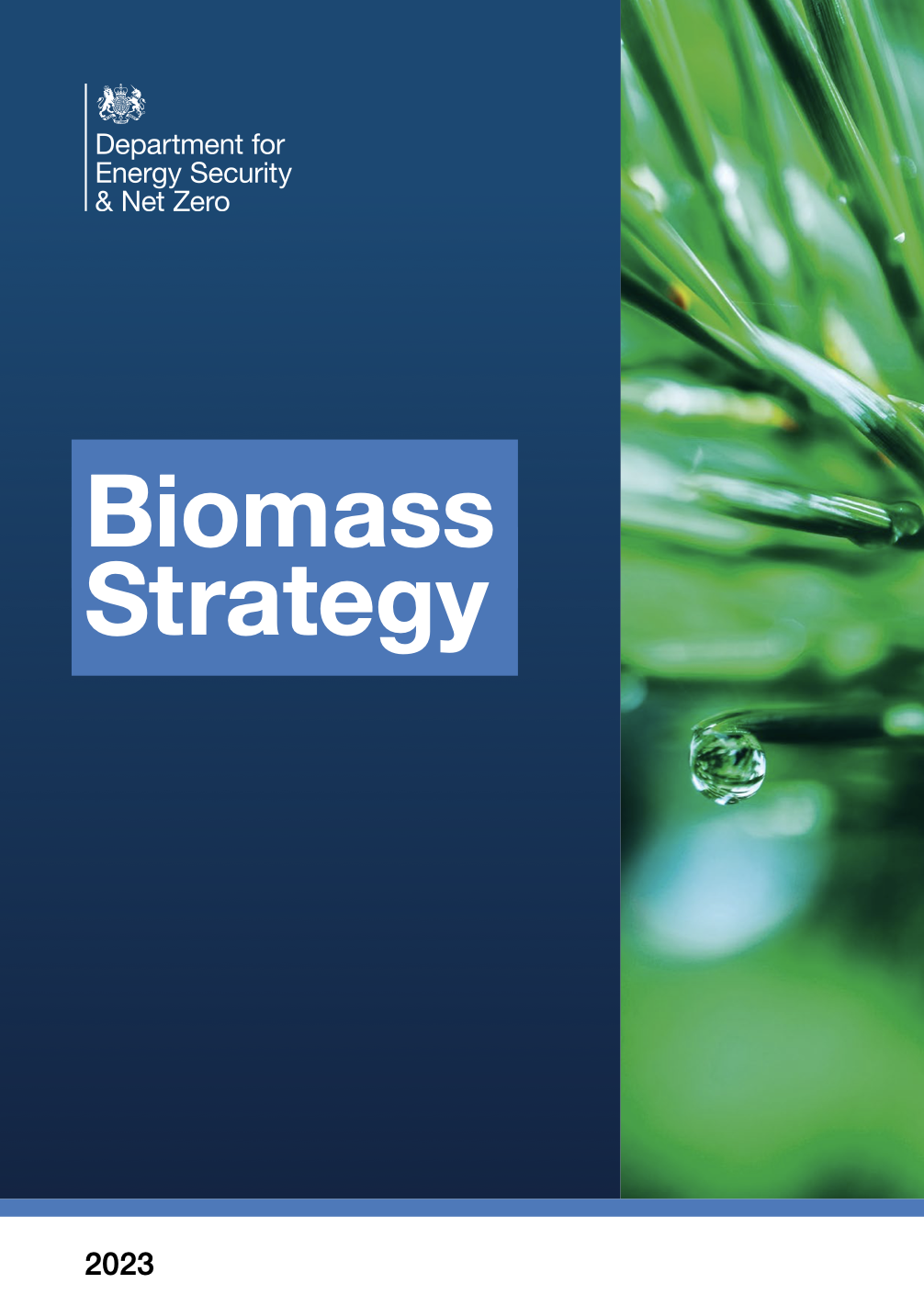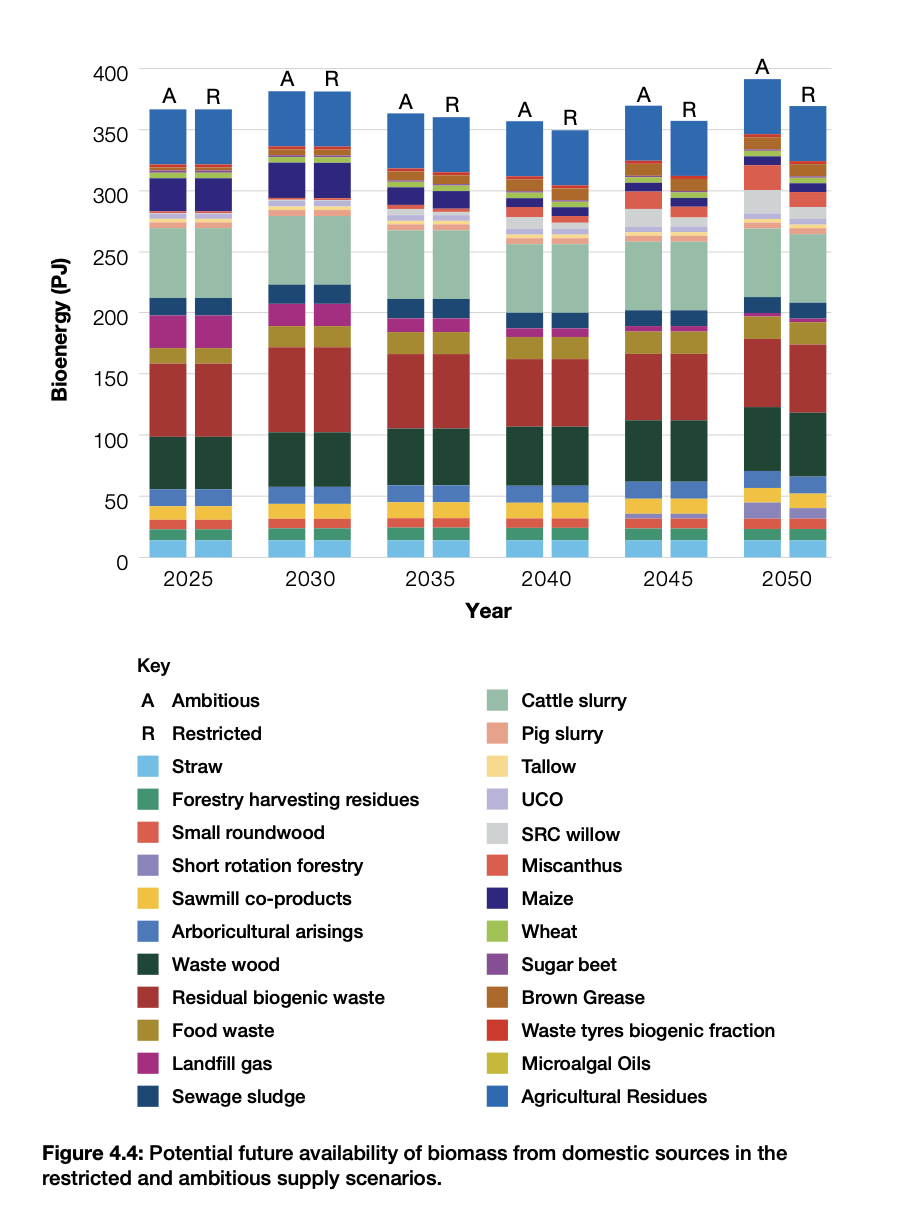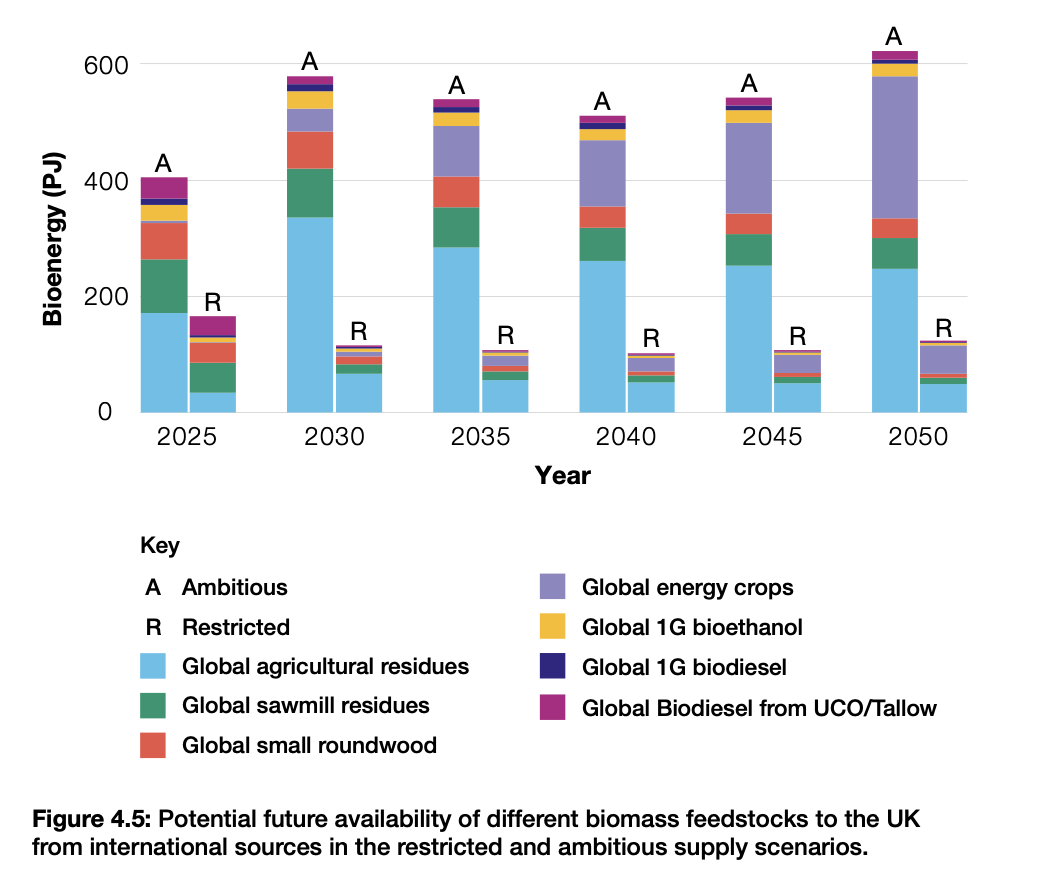In August 2023, the Department for Energy Security and Net Zero of the United Kingdom adopted a Biomass strategy. With 11% of the total electricity production from biomass in 2022, the state is considering a significant increase in the use of this renewable resource in the future in three energy sectors: in transport, in the production of heat and in the production of electricity, as well as its non-energy use.

In March this year, the newly formed Department for Energy Security and Net Zero published the Powering Up Britain strategy, setting out how we’re going to build a truly green economy. As that strategy made clear, biomass has a major role to play. The UK is already a global leader in biomass policy and technologies, with biomass accounting for 8.6% of energy supply in 2022. Biomass from domestic sources currently make up 66% of the total biomass used in renewable energy generation, with the rest deriving from international sources.
As sustainable biomass is a limited resource and future availability to the UK is uncertain, its use should be prioritised where it offers the greatest environmental, economic and social benefits. Opportunities for biomass use within each sector should be considered against other low carbon alternatives available to that sector. As a result, harder to decarbonise areas, technologies and sectors should be some of the priority uses of biomass.
The strategy provides for short term (this decade), medium term (until 2035) and long term objectives (until 2050), within which the Government will support the use of sustainable biomass through a series of incentives and requirements in the electricity, heat and transport sectors. The strategy declares a long-term priority in the use of biomass that generates negative emissions (for example, for the use of CO2 capture and storage technology).
In the short term (2020s) government will continue to facilitate sustainable biomass deployment through a range of incentives and requirements covering power, heat and transport.
By 2035, emphasis will be placed on the application of bioenergy with BECCS (carbon capture and storage) technologies.
The use of biomass in the long term is difficult to predict, but simulation results show that only bioenergy combined with BECCS technologies will make the biggest contribution to achieving carbon neutrality. Biomass can also help in sectors that are difficult to decarbonize and that cannot apply BECCS technologies.
The place of biomass in the UK strategy: domestic resources and imports
The UK’s domestic biomass resources are specially grown energy crops, organic waste and residues. The strategy envisages the use of traditional food and fodder crops, perennial energy plants (miscanthus and woody energy plants –SRC), waste, agricultural residues, forest cuttings and processing residues, as well as marine and new raw materials.
The scenarios presented in the strategy for the supply of biomass from energy plants are conservative, as they take into account cultivation on abandoned agricultural lands, without crop rotation in the process of growing food crops. The assessments also take into account current sustainability requirements.
Internal resources of biomass
In 2022, biomass accounted for 66% of the total supply from RES (heat, electricity, transport). The current composition of local biomass resources is quite diverse. About 35% is plant biomass, which includes straw, wood pellets, agricultural residues and other types of plant biomass. About 121,000 hectares of land are used for the cultivation of energy plants, of which the majority (92%) is used for biofuels and biogas. Biogenic waste accounts for 18% of the local biomass supply, including wood waste, biogas from sewage, biogas from landfills and food waste. In transport, locally sourced renewable fuels accounted for 10% of the total in 2021, with 77% of locally sourced renewable fuels being produced from waste such as used cooking oil, food waste and the organic fraction of municipal solid waste.

The supply of locally produced biomass resources will play an important role in the future economy of the UK and, according to the strategy analysis, could range from 370 PJ in the limited scenario to 390 PJ in the ambitious scenario in 2050. Cattle manure, various plant wastes and residues, as well as wood waste have been identified as the largest sources of sustainable, stable, reliable and cost-effective biomass supply. The future availability of purpose-grown biomass is more uncertain, but also has greater potential for growth. According to the assessment of the availability of raw materials, the supply of biomass for energy plants will increase significantly from 2030. The latest government projections of potential future rates of plantation planting suggest that an increase in plantings to around 17,000 hectares per year could be achieved by 2038.
Estimates of UK Biomass Imports to 2050
The strategy assumes that agricultural residues and energy crops dominate potential availability of imports in 2050 in both scenarios. In the ambitious scenario availability of global agricultural residues increased to 247 PJ in 2050 (from 171 PJ in 2025), while availability of global energy crops increases to 245 PJ in 2050 from 4 PJ in 2025, showing the importance of global energy crop production to potential future availability of international biomass supply to the UK.

Priorities of biomass use in sectors of the economy of the United Kingdom
Widespread use of biomass in the energy sector within the framework of the strategy is possible only with the observance of the principles of sustainability.
Biomethane can directly displace fossil methane across a range of end uses, and the government recognises that it will continue to play an important role in optimising the path to net zero and increasing energy security.
Biomass has a role in decarbonising the heating of certain properties such as off- gas grid homes that are not readily suitable for heat pumps, and where appropriate mitigations can be set in place to minimise air quality impacts.
While we see the use of biofuels today in light road vehicles, their role in transport will increasingly shifting to transport modes with limited alternatives to the use of liquid and gaseous fuels, such as aviation and maritime.
One of the UK government’s aims is to promote the industry’s transition from fossil fuels to low-carbon renewable alternatives such as biomass. The challenge is to support this transition by creating a robust strategy that will enable the industry to achieve 50 TWh of industrial fuel switching to low carbon fuels by 2035.
A particular is on effectively utilising biomass to achieve this target using greenhouse gas removal (GGR) technologies, such as BECCS. In the absence of viable BECCS infrastructure, we will continue to support biomass use in industry where limited low carbon alternatives are available.
Britain’s Energy Security Strategy (2022) doubled down on the country’s ambition to reach 10 GW of low-carbon hydrogen capacity by 2030, subject to affordability and value for money. The hydrogen economy is still a nascent sector and the UK is keen to support multiple production routes, including those using biomass, provided they meet the low-carbon hydrogen standard and relevant funding criteria.
The strategy also emphasizes that biomass is a flexible resource that can contribute to decarbonization not only as an energy source, but also as a material to replace the use of fossil fuels. The concept of bioeconomy, which can be defined as encompassing all sectors of the economy that use biomass to produce materials and products, is receiving increasing attention worldwide. Non-energy uses of biomass include wood-based products (wood, wood panels, etc.), biochemical substances and biomaterials (bioplastics). The potential of the latter in reducing greenhouse gas emissions is currently being assessed, as the chemical industry is the UK’s largest export-oriented manufacturing sector (£28 billion of added value to the national economy in 2020) and employs 104,000 highly skilled workers.
Source: United Kingdom Biomass Strategy
We thank the expert of the Bioenergy Association of Ukraine Oleksandra Tryboi for the analysis of the document.